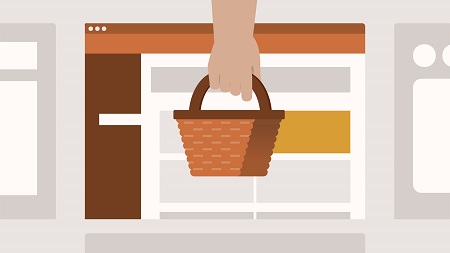
English | MP4 | AVC 1280×720 | AAC 48KHz 2ch | 1h 07m | 216 MB
Want to build an online store? Build it with WordPress and take advantage of all the sophisticated plugins and rich development features the platform has to offer.
To start, Patrick Rauland looks at the essentials: how to get paid, calculate shipping, and calculate and charge taxes. He helps you set up a payment gateway, select a shipping method, and grasp how taxes work and how to collect them from customers. And if you weren’t convinced already, Patrick reviews the benefits of WordPress ecommerce tools, as well as a selection of third-party tools that integrate beautifully with WordPress. Plus, get bonus tips on marketing your new website, attracting and retaining customers, and testing and optimizing your site.
Topics include:
- Getting paid
- Calculating shipping
- Collecting taxes, including value-added tax (VAT)
- Using WordPress or third-party platforms for ecommerce
- Defining your audience
- Organizing your products
- Marketing your WordPress site
- Testing and optimizing your site
Table of Contents
Introduction
1 Build an ecommerce store
2 What you need to know
Ingredients for Ecommerce
3 Essential ecommerce features
4 Shipping payment and taxes
Getting Paid
5 Overview of accepting payment
6 Payment gateways
7 PayPal Apple Pay and Amazon Pay
8 PCI compliance
Calculating Shipping
9 Select a shipping method
10 Dont underestimate free shipping
Taxes
11 Understanding taxes
12 Collecting EU value-added tax (VAT)
13 Using tax services
Using WordPress for Ecommerce
14 Using native WordPress platforms
15 Using third-party platforms
Understand Your Market
16 Choosing a business model
17 Defining your audience
18 Organizing your products
19 Validate your product
Marketing Your Site
20 Attract traffic
21 Increase your average order value
22 Understanding customer lifetime value
23 Increasing CLV with repeat customers
Testing and Optimizing
24 Testing your site
25 Optimizing your site
Conclusion
26 Next steps
Resolve the captcha to access the links!